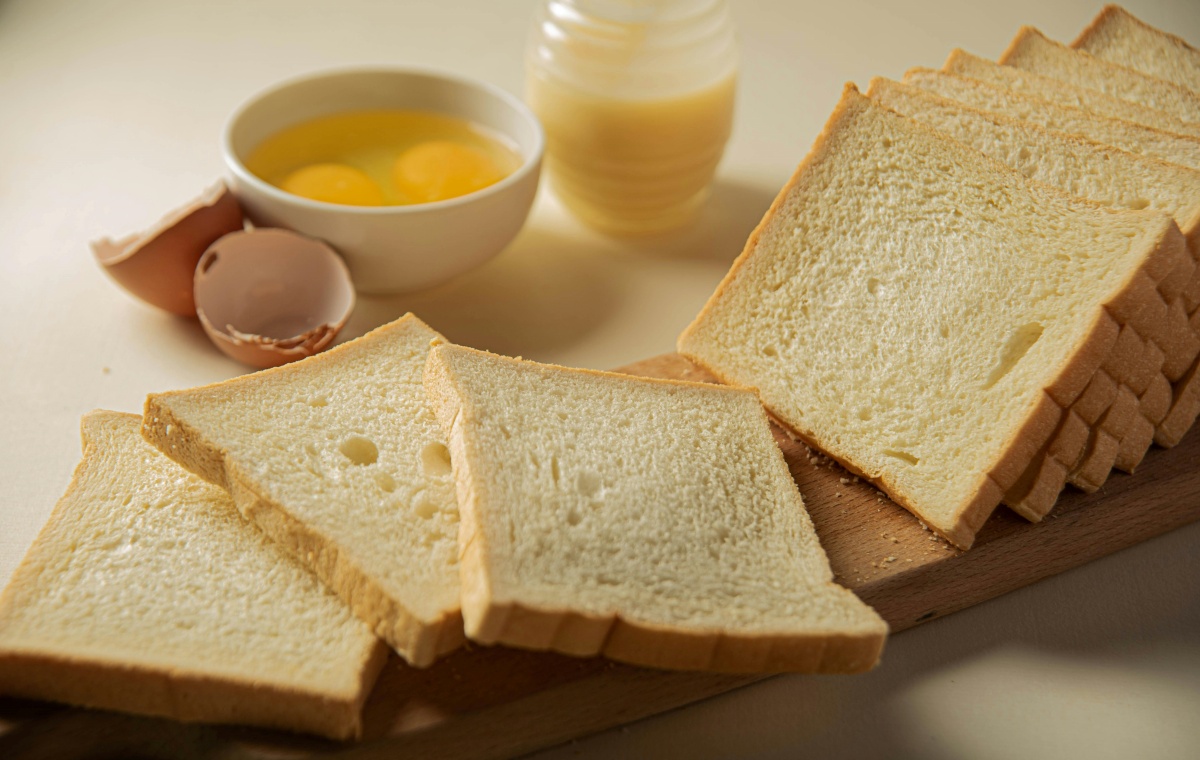Proof the yeast
In a large bowl or stand mixer, add the yeast, water, and a pinch of sugar or honey. Allow the mixture to rest for 5-10 minutes until it becomes foamy and bubbly. To make sure the yeast is active, it is referred to as ‘proofing’. If it doesn’t foam, the yeast is not good, and you need to start over with fresh yeast.
Rehydrating or activating yeast is a crucial step before using it in bread or other baked goods. The process involves combining the yeast with warm water and a small amount of sugar. This aids in rehydrating the yeast and confirming that it is still active and capable of rising the dough.
Prepare the dough
Add the remaining sugar or honey, salt, oil, and 3 cups of flour. Combine by mixing. Mix in another cup of flour until everything is combined. With the mixer running, add more flour, 12 cup at a time, until the dough begins to pull away from the sides of the bowl. One of the most problematic areas of kneading bread dough is the stickiness of the dough. The skill lies in dealing with the dough’s stickiness and kneading it correctly.
The more time you spend kneading, the more it improves. Using a soft dough will enable you to create the desired shapes for your bread. Poor preparation of the dough results in a poor taste or appearance of the final product. Once you master the homemade bread dough kneading process, bread baking becomes very easy. The joy of eating your own chemical and preservative-free bread is incomparable.
Knead the dough
Mix the dough for 5 minutes on medium speed (or knead with your hands on a lightly floured surface for 5-8 minutes). The dough needs to be smooth and elastic, with a slight stickiness to a clean finger, but not too sticky. The process of kneading dough involves working with your hands to develop gluten and create a smooth, elastic, and strong texture. In order to bake bread and other dough-based items, it’s crucial to take this step.
Kneading is a crucial step in making Indian bread. The smoothness and suppleness of the dough is essential for good rotis. By hand kneading, gluten formation is improved and the roti or paratha has a good texture. The formation of gluten occurs when two proteins combine in wheat flour. The elastic structure of the dough is created by gluten. After the flour is mixed with water, the proteins in the dough are in a rou…
First Rise
Coat a large bowl with oil or cooking spray and put the dough inside. Cover with a dish towel or plastic wrap and let it rise in a warm area until it has doubled in size. ‘First Sunrise’ can refer to several different things, including the act of observing the first sunrise of the year. The initial stage of fermentation when making bread, or the starting point of a new day or journey.
Welcome to your first bulk fermentation. We refer to this step as a bulk fermentation because we are letting our whole dough ferment as one large mass. Before dividing it into a final shape or forming it for secondary proofing. There will be more on secondary proofing of shapes in the future. As the yeast activates and begins to feed, fermentation begins to take place in our bread, and the starches begin to break down. The gluten network within the loaf begins to expand as carbon dioxide gas bubbles up within the dough. Our bread’s gas-filled cellular structure is created in this manner! The first rise should take about 1-2 hours in a kitchen that has a temperature of 72-78 degrees. You want your dough to double in volume. Any growth beyond double will move you into the danger zone of over-proofing the dough.
Roll the dough down
How and why to punch down dough in breadmaking. Rolling dough down refers to two different things: either rolling it out with a rolling pin or deflating it (punching it down) after it has risen. To achieve a desired thickness and shape, the first step in rolling out dough is flattening and stretching it with a rolling pin. Punch down in the second instance involves gently pressing the dough to release trapped air bubbles and redistribute yeast. Yeast and sourdough bread recipes often instruct you to punch down the dough.
Punching down is a common technique used in bread baking and is essential for almost every yeast bread you bake. Punching down the dough deflates it and releases the air, so that you can knead it and form it into loaves or other shapes. Fortunately, it’s a simple task to accomplish. You have the option to either punch or fold the dough to create different textures in your baked loaves.
Divide into two equal parts
The term ‘Roll the Divide’ is not a standard mathematical or technical concept. However, if ‘divide’ refers to dividing a shape or number into two equal parts, then that would be called bisection. To describe a line that divides a figure or number into two equal parts, it is often called a bisector or line of symmetry.
Second rise
The second rise in baking, particularly for bread, refers to the second phase of dough fermentation after the initial bulk rise. After the dough has been shaped and before it goes into the oven, this second rise typically takes place. The second rise is intended to enhance the dough’s structure, flavor, and texture even more.
